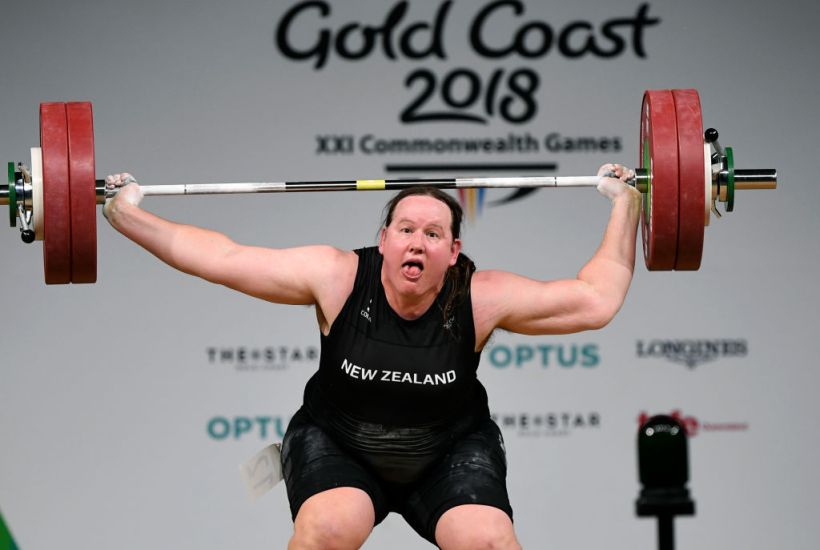The problem with trying to accommodate every individual’s feelings and desires is that biological realities must eventually be ignored. To afford transgender athletes a place in female competition is as morally reprehensible as it is intellectually dishonest.
In addition to being grossly inequitable for women, it is symptomatic of a culture allowing emotion to reconstruct its logical and ethical parameters. Progressive ideology only rewards those selfish enough to demand inclusion at the expense of fairness for others. In the process, the integrity of athletic competition has been undermined and feminists the world over are left to wonder how men are allowed to be better at being women than actual women.
Not only must women tolerate the inclusion of biological males in their competition, they must also not comment on or question decisions allowing transgender athletes to compete. That is unless they wish to be called transphobic bigots on social media and be forced to publicly apologise. That’s what happened to cyclist Jenifer Wagner, the third placed woman who dared to question the inclusion of transgender athlete Rachel McKinnon at the World Masters Championships. McKinnon subsequently became world champion and now holds a world record over the 200-metre sprint.
In a world-class display of mental gymnastics, McKinnon argued that policing testosterone levels of transgender athletes is a violation of their human rights. McKinnon contended “focusing on performance advantage is largely irrelevant because this is a rights issue.” In other words: “My self-proclaimed, subjective assertion that I am a woman overrides any concerns surrounding athletic integrity and scientific validity.” McKinnon also reassured us that we “shouldn’t be worried about trans people taking over the Olympics. We should instead be worried about their fairness and human rights.” For now at least, it seems that McKinnon and other transgender sports stars will continue to call the shots while sporting associations fumble around with the definitions of male and female.
Despite standing at 6’2” and weighing over one hundred kilograms, athletes like Hannah (formerly Callum) Mouncey will continue playing handball for Australia’s women’s team. Hannah brings a wealth of experience, body mass and strength from her former days representing the Australian men’s team. In the USA, high school athletes Terry Miller and Andraya Yearwood will continue to finish first and second in their State 100 and 200 metre championships, often 10 metres clear of their competition. Fallon Fox will continue to knock out female MMA competitors. One hundred and thirty-one kilogram weightlifters like New Zealander Laurel Hubbard will be permitted to win gold medals at international weightlifting events. Perhaps a higher bone density and a life of lifting as an adult male might have assisted Hubbard, but who cares about that when we can care more about her feelings instead.
Sporting organisations the world over struggle to define what makes someone a man or woman. In the past, the sex ascribed at birth determined which competition an individual could enter. Other organisations such as the IOC and NCAA now require two years of hormone therapy, while school sporting organisations simply require a competitor to identify as a women.
Why not revert to the simple Barr body test that can determine a person’s sex by analysing their chromosomes? Unfortunately legal precedent has already been set by the New York Supreme Court invalidating the use of such testing. In 1976, Renee Richards was denied entry to the US Open after spectators began to suspect she may in fact be the former male state champion Richard Raskind. Maybe her 6’2” stance and having the fastest serve in the competition was a giveaway.
By suing the United States Tennis Association however, Richards was eventually allowed to play. Judge Alfred Ascione ruled the Barr test to be “grossly unfair, discriminatory and inequitable, and a violation of her rights.” The problem with prioritising self-affirmed rights over necessary testing is that the rights of every other female competitor are forfeited in the name of inclusivity. This issue has not yet been dealt with by major sporting organisations that are too afraid or reluctant to stamp out such blatant disregard for decades of scientific research.
Speaking of scientific research, endocrinologist Dr Ramona Krtuzick has been one of a very few professionals to publicly speak out regarding MMA fighter Fallon Fox. Fox of course being former military man Burton Boyd who transitioned at the age of 31. Krtuzick remained unconvinced that Fox had lost any physical advantage despite undertaking hormone treatment.
“Typically, you’re looking at about 15 years after androgen suppression and sexual reassignment surgery to really start to see significant changes in bone density. It’s been too early for her to see much of a decrease in bone mass or to make her equal to that of a female. She started off with a much higher bone density than other women the same age, and therefore will maintain a lot of that for a while. Additionally, because she is taking oestrogen, that will actually help to maintain that bone mass. Women also have lighter, childbearing hips because of the difference in hormones during the body’s developmental years. Her skeleton, body mass and shape developed a long time ago. Those changes cannot be undone. They are permanent.” Krtuzick also stated that Fox has a naturally higher propensity to build and maintain muscle mass because she was once a fully developed, adult male. “You can’t ever take that away from her.”
Fox’s opponent Tamikka Brents required seven head staples after suffering a concussion and orbital bone fracture when fighting Fox. Following the fight Brents revealed her thoughts via twitter: “I’ve fought a lot of women and have never felt the strength that I felt in a fight as I did that night. I can’t answer whether it’s because she was born a man because I’m not a doctor. I can only say, I’ve never felt so overpowered ever in my life and I am an abnormally strong female in my own right. Her grip was different, I could usually move around in the clinch against other females but couldn’t move at all in Fox’s clinch.”
Aside from bone density, skeletal structure and years spent training as adult males; men possess a higher mass of haemoglobin in their blood. In addition to higher haemoglobin levels, men also have a greater total blood volume than women. As a result, women have a reduced capacity to transport oxygen. The female heart is less effective at pumping blood and muscles are slower to extract oxygen from that blood. Because these factors are directly linked to aerobic fitness and muscular endurance, biological differences between the sexes in athletic performance cannot be ignored. The transition from man to woman does not magically remove the higher volume of blood and haemoglobin count.
Another relatively new myth propagated by trans activists is that testosterone does not build muscle mass and therefore higher levels should not be considered advantageous. If testosterone does nothing to enhance performance, why is it a prohibited substance? In 2006, testosterone was in fact the single most-common banned substance detected in urine tests at WADA-accredited laboratories. Testosterone represented 26 per cent of all “adverse analytical findings”. In 2000, testosterone also accounted for the largest fraction (34 per cent) of AAS-positive urine tests at the Sydney Olympic Games.
Despite prohibiting the use of testosterone, the IOC’s official policy allows trans athletes to compete with far more testosterone in their system than almost every elite female athlete. The average elite female athlete produces between 0.1 and 3.08 nanomoles of testosterone per litre of blood. Fewer than one per cent of elite female athletes produce more than 3.08 nanomoles. The acceptable testosterone levels for transgender women are set at a lofty 10 nanomoles per litre by the International Olympic Committee. This is more than three times higher than the normal levels of testosterone found in 99 per cent of female athletes.
For those who remain unconvinced of testosterone’s ability to improve performance, a 2011 study from Steven Stanton and Ruth Wood succinctly outlines the advantages higher testosterone levels yield for competitors. In an article for Hormonal Behaviour, the main benefit of testosterone is its ability to reduce body fat. As women have a far higher body fat percentage than men, trans athletes have the advantage of a greater lean body mass to compete with. The study also draws on material from 2003 (Storer et al) which demonstrates testosterone’s ability to stimulate an increase in muscle mass. Furthermore, androgens act on specific substrates in the brain to increase aggression and motivation for competition.
To assert that men who transition to women have no competitive advantage is simply delusional and denigrating to the achievements of real women. Not only does it undermine decades of scientific research, it has made a complete mockery of the idea of fair athletic competition. Transgender participation in female sport is not opposed due to intolerance of transgender people. It is not about targeted harassment, it is not about hatred and it is certainly not about discrimination. The self-declared “rights” of transgender athletes to demand inclusion should never usurp the right of women to safely and fairly compete against other women.
Got something to add? Join the discussion and comment below.
Got something to add? Join the discussion and comment below.
Get 10 issues for just $10
Subscribe to The Spectator Australia today for the next 10 magazine issues, plus full online access, for just $10.


























Comments
Don't miss out
Join the conversation with other Spectator Australia readers. Subscribe to leave a comment.
SUBSCRIBEAlready a subscriber? Log in